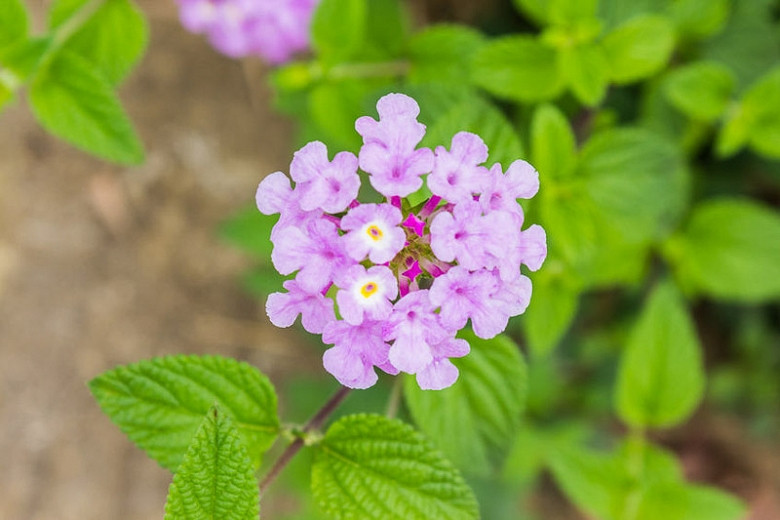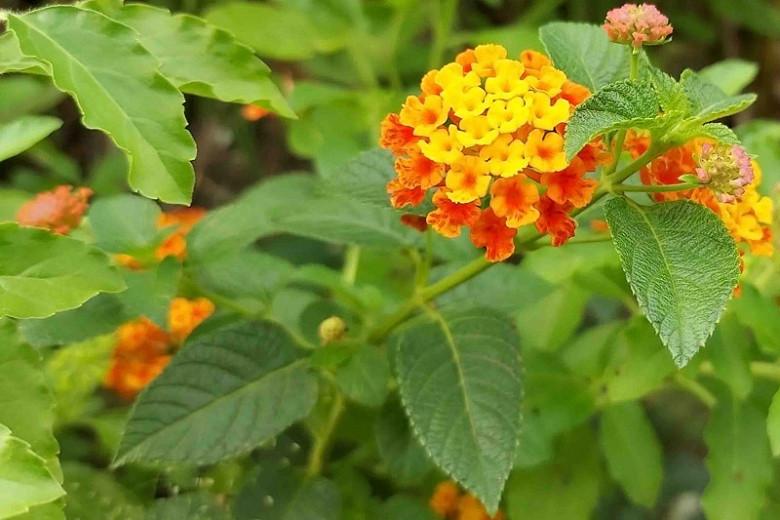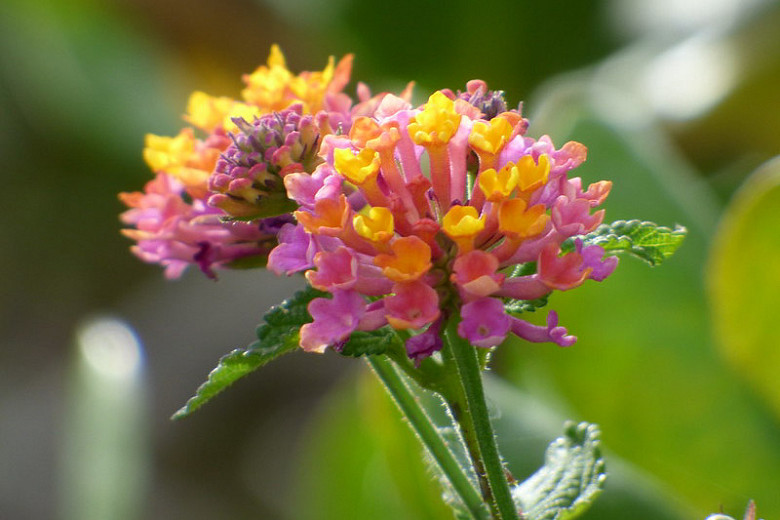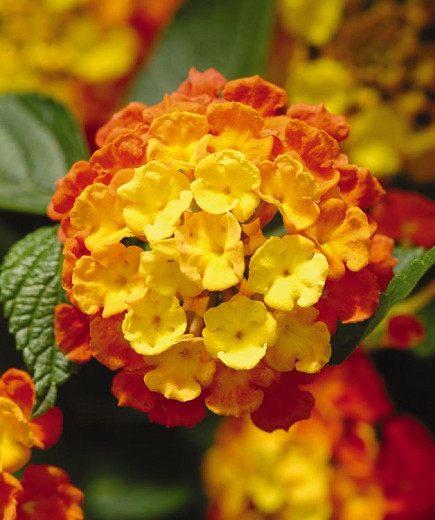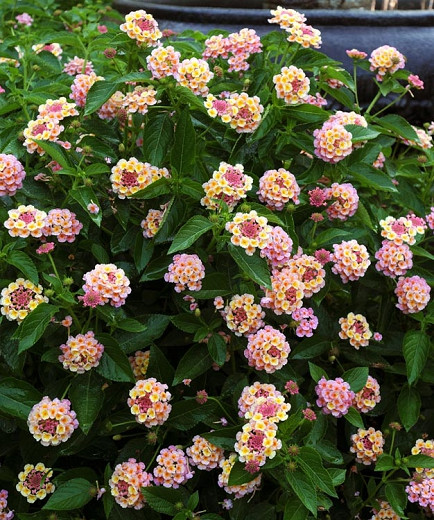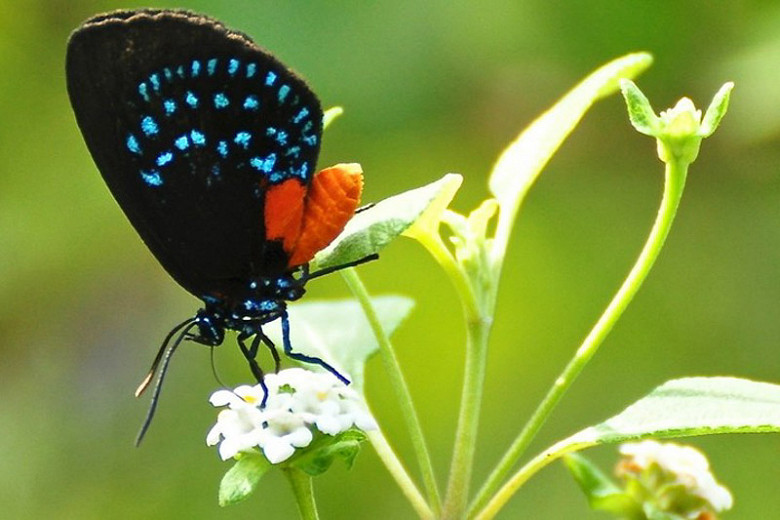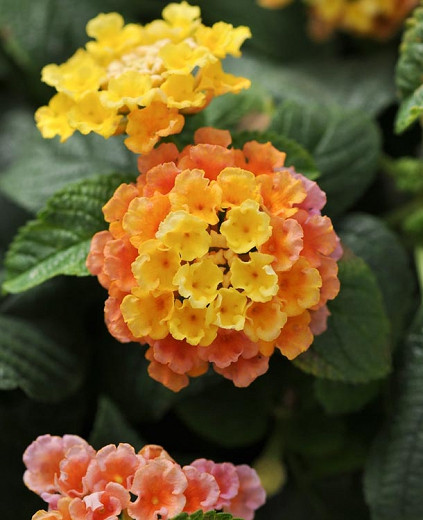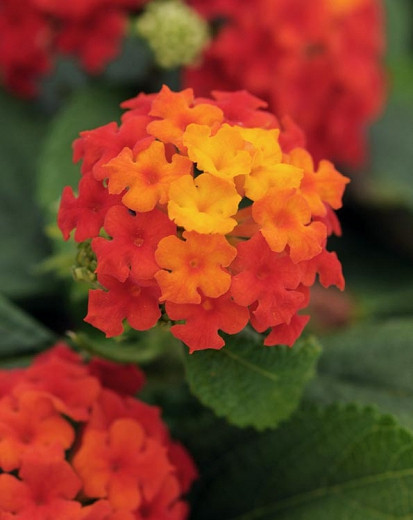Lantana montevidensis (Trailing Lantana)
A popular landscape plant, Lantana montevidensis (Trailing Lantana) is a sprawling woody shrub forming a dense and colorful groundcover with its evergreen foliage of strongly-scented, small, coarsely-toothed, slightly-hairy, dark green leaves. Round clusters of tiny rosy lilac flowers, adorned with a yellow throat, bloom continuously throughout the year in frost-free areas.
A popular landscape plant, Lantana montevidensis (Trailing Lantana) is a sprawling woody shrub forming a dense and colorful groundcover with its evergreen foliage of strongly-scented, small, coarsely-toothed, slightly-hairy, dark green leaves. Round clusters of tiny rosy lilac flowers, adorned with a yellow throat, bloom continuously throughout the year in frost-free areas. In cooler areas, Lantana montevidensis is grown as an annual, with flowers blooming from spring to fall. They attract butterflies and bees. This Lantana is a tough, resilient plant valued for its long season of reliable blooms.
- Grows up to 12-18 in. high (30-45 cm) and 3-5 ft. long (90-150 cm).
- Easily grown in average, medium moisture, well-drained soils in full sun. Tolerates part shade, but the best flower production is obtained in full sun. This plant thrives in sandy, slightly dry soils. Once established, needs only occasional watering.
- Thrives in extreme heat, and drought. Lantana is salt tolerant, making it an excellent choice for plantings near the beach.
- Deer resistant
- Great as a groundcover, banks and slopes, cottage gardens, coastal gardens, Mediterranean gardens, or in containers. Lovely when cascading from hanging baskets or over a wall.
- Lantana is generally a very low-maintenance plant. May be subject to powdery mildew if grown in shade. Leaf spot and stem rot may also occur.
- Highly toxic if ingested, contact with foliage may irritate the skin. Wear gloves and other protective equipment when handling.
- Toxic to dogs, toxic to cats, toxic to horses, toxic to humans.
- Native to South America
Requirements
| Hardiness | 8 – 12 |
|---|---|
| Heat Zones | 9 – 11 |
| Climate Zones | 8, 9, 10, 12, 13, 14, 15, 16, 17, 18, 19, 20, 21, 22, 23, 24, H1, H2 |
| Plant Type | Perennials, Shrubs |
| Plant Family | Lantana |
| Exposure | Full Sun, Partial Sun |
| Season of Interest | Spring (Early,Mid,Late)Summer (Early,Mid,Late)FallWinter |
| Height | 1' – 2' (30cm – 60cm) |
| Spread | 3' – 5' (90cm – 150cm) |
| Spacing | 24″ (60cm) |
| Water Needs | Low, Average |
| Maintenance | Low |
| Soil Type | Chalk, Clay, Loam, Sand |
| Soil pH | Acid, Alkaline, Neutral |
| Soil Drainage | Well-Drained |
| Characteristics | Showy, Evergreen |
| Tolerance | Deer, Drought, Salt |
| Attracts | Bees, Butterflies |
| Garden Uses | Banks and Slopes, Beds and Borders, Ground Covers, Hanging Baskets, Patio and Containers, Walls and Fences |
| Garden Styles | Coastal Garden, Informal and Cottage, Mediterranean Garden |
